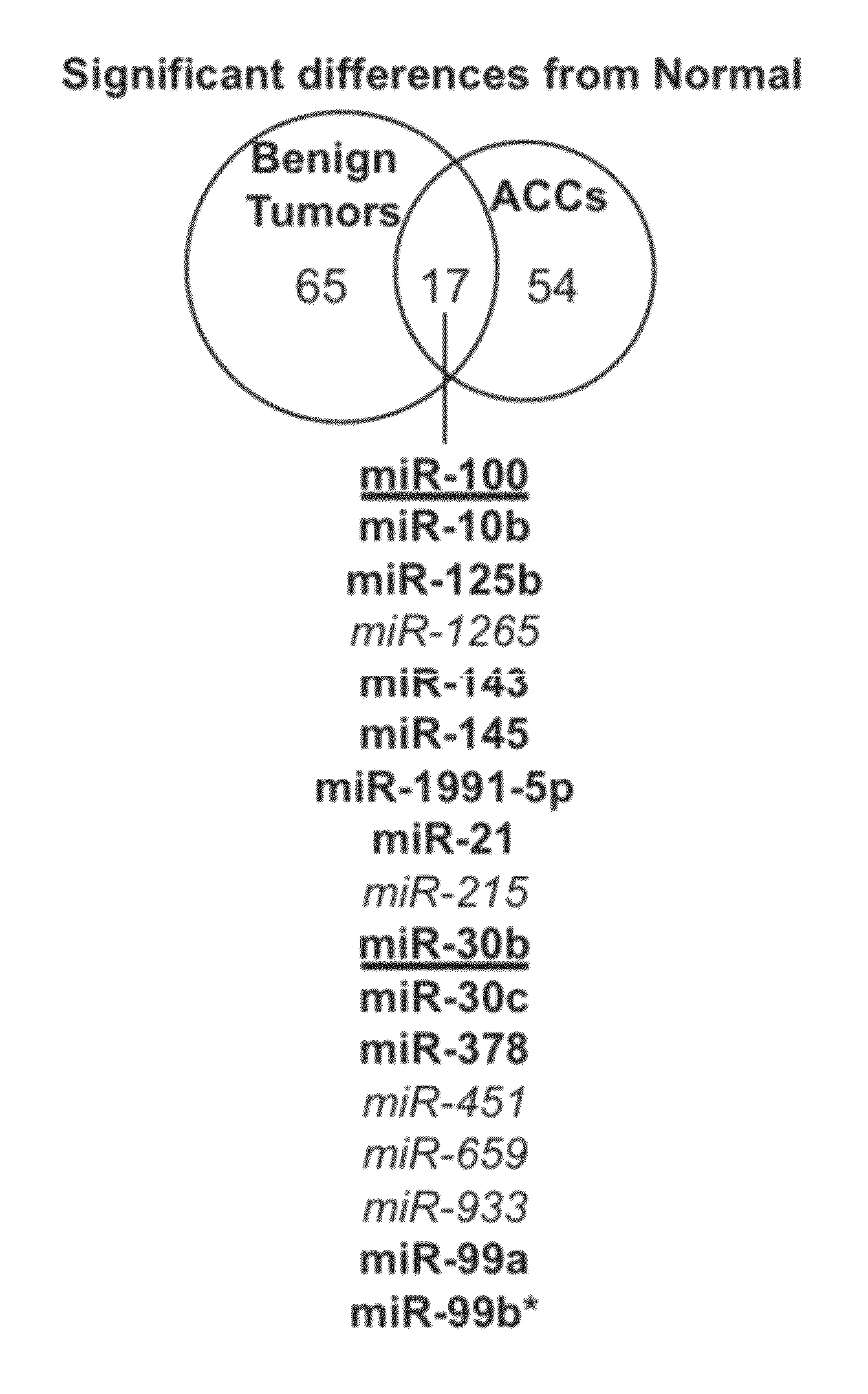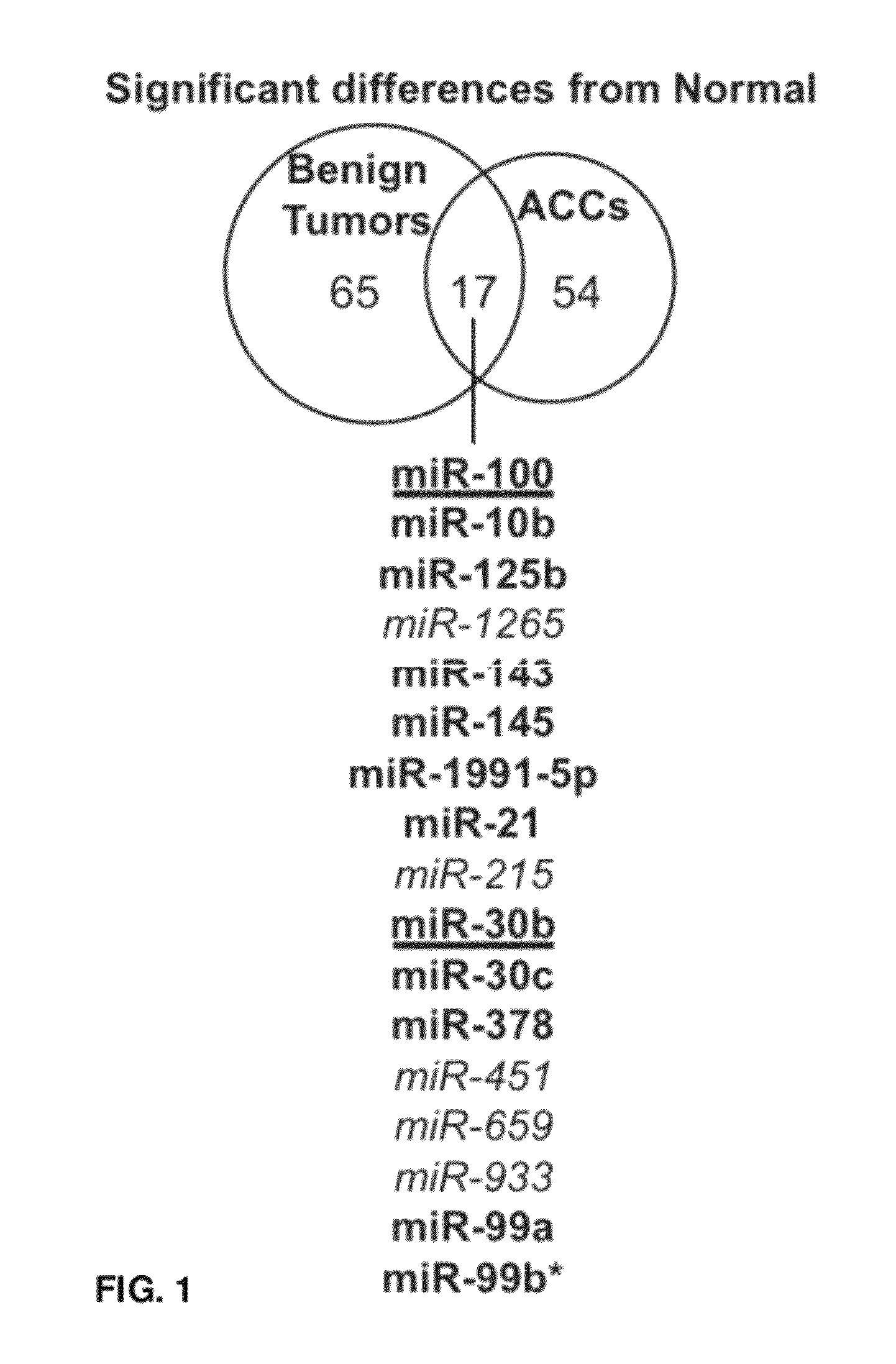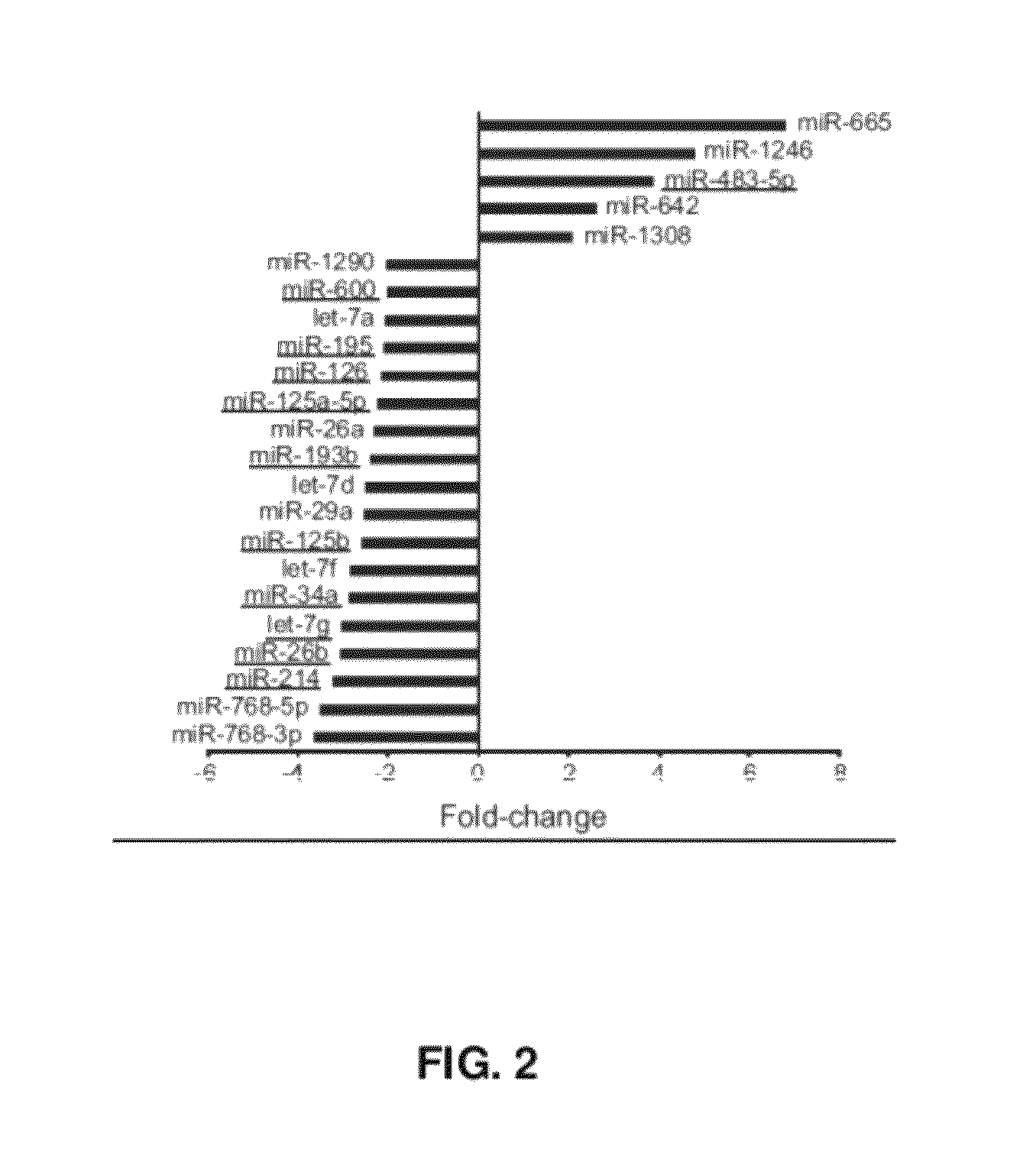Diagnosis and treatment of adrenocortical tumors using human microRNA-483
a technology of adrenocortical tumors and micrornas, which is applied in the field of micrornas, can solve the problems of inability to accurately diagnose adrenocortical tumors, lack of effective therapies, and limited knowledge regarding the initiation and pathophysiology of tumors, so as to achieve accurate diagnosis and increase the effect of a
- Summary
- Abstract
- Description
- Claims
- Application Information
AI Technical Summary
Benefits of technology
Problems solved by technology
Method used
Image
Examples
example 1
Materials and Methods
[0247]This is example describes the material and methods used to perform the studies in Examples 2-7.
[0248]Tissue Samples.
[0249]Adrenocortical tissue samples were procured at the time of surgery, snap frozen in liquid nitrogen, and stored at −80° C. Patient and tumor characteristics used for miRNA microarray profiling are summarized in Table 1. Tumors were classified as adrenocortical carcinoma when gross local invasion and / or metastasis (lymph or distant) was present at the time of diagnosis or occurred during follow-up. Localized tumors with no evidence of recurrence at follow-up (mean 2.1 years) were classified as benign. An independent set of benign (n=35), locoregional ACC recurrences (n=2), and ACC metastases (n=29) tumor samples were used for validation. Normal adrenal glands were procured from healthy organ donors under an IRB approved protocol (n=21). Laser capture microdissection was used to isolate tissue from the cortex.
[0250]
TABLE 1Clinical Features...
example 2
Identification of Differentially Expressed miRNAs
[0261]This example describes the identification of differentially expressed miRNAs in ACCs and benign adrenocorcial tumors.
[0262]The global miRNA profiles were obtained for the samples listed in Table 1 which included 10 primary adrenocortical carcinomas (ACCs) and 26 benign adrenocortical tumors. A total of 36 microarrays were performed comparing the total RNA from each individual tumor sample to a common reference pool of RNA from 21 normal adrenal cortices. All 36 arrays were of adequate quality for analysis.
[0263]The difference between tumors and normal adrenocortical tissue was determined. Differentially expressed miRNAs were defined as those that had an adjusted p-value of less than 0.01 as described in the Materials and Methods (Example 1). There were a similar number of differentially expressed human miRNAs in both benign and malignant tumors as compared to normal (82 and 71, respectively) (FIG. 1). Only 17 miRNAs were differe...
example 3
Unsupervised Cluster Analysis of the Most Differentially Expressed miRNAs
[0264]This example describes unsupervised cluster analysis of the most differentially expressed miRNAs detected in Example 2.
[0265]The microarray design compared each tumor sample to a common reference (pooled normal), thereby allowing for direct assessment of the miRNA expression differences between benign and malignant adrenocortical tumors. The fifty most variable miRNAs are provided in Table 2 below. Each of the miBase Accession numbers provided are incorporated by reference as available on Dec. 6, 2010 in the miBase Database.
[0266]
TABLE 250 most variable miRNAs (used for unsupervised clustering)Expression inmalignant asExemplary miRBasemiRNAcompared to benignAccession Nos.hsa-miRPlus-E1047downhsa-miR-125b / mmu-downMI0000446; MI0000470miR-125b-5p / rno-miR-125b-5phsa-miR-143 / mmu-downMI0000459; MI0000257miR-143 / rno-miR-143hsa-miR-29a / mmu-downMI0000087; MI0000576;miR-29a / rno-miR-29aMI0000863hsa-miR-23bdownMI0000...
PUM
| Property | Measurement | Unit |
|---|---|---|
| weight | aaaaa | aaaaa |
| thick | aaaaa | aaaaa |
| thickness | aaaaa | aaaaa |
Abstract
Description
Claims
Application Information
 Login to View More
Login to View More - R&D
- Intellectual Property
- Life Sciences
- Materials
- Tech Scout
- Unparalleled Data Quality
- Higher Quality Content
- 60% Fewer Hallucinations
Browse by: Latest US Patents, China's latest patents, Technical Efficacy Thesaurus, Application Domain, Technology Topic, Popular Technical Reports.
© 2025 PatSnap. All rights reserved.Legal|Privacy policy|Modern Slavery Act Transparency Statement|Sitemap|About US| Contact US: help@patsnap.com



